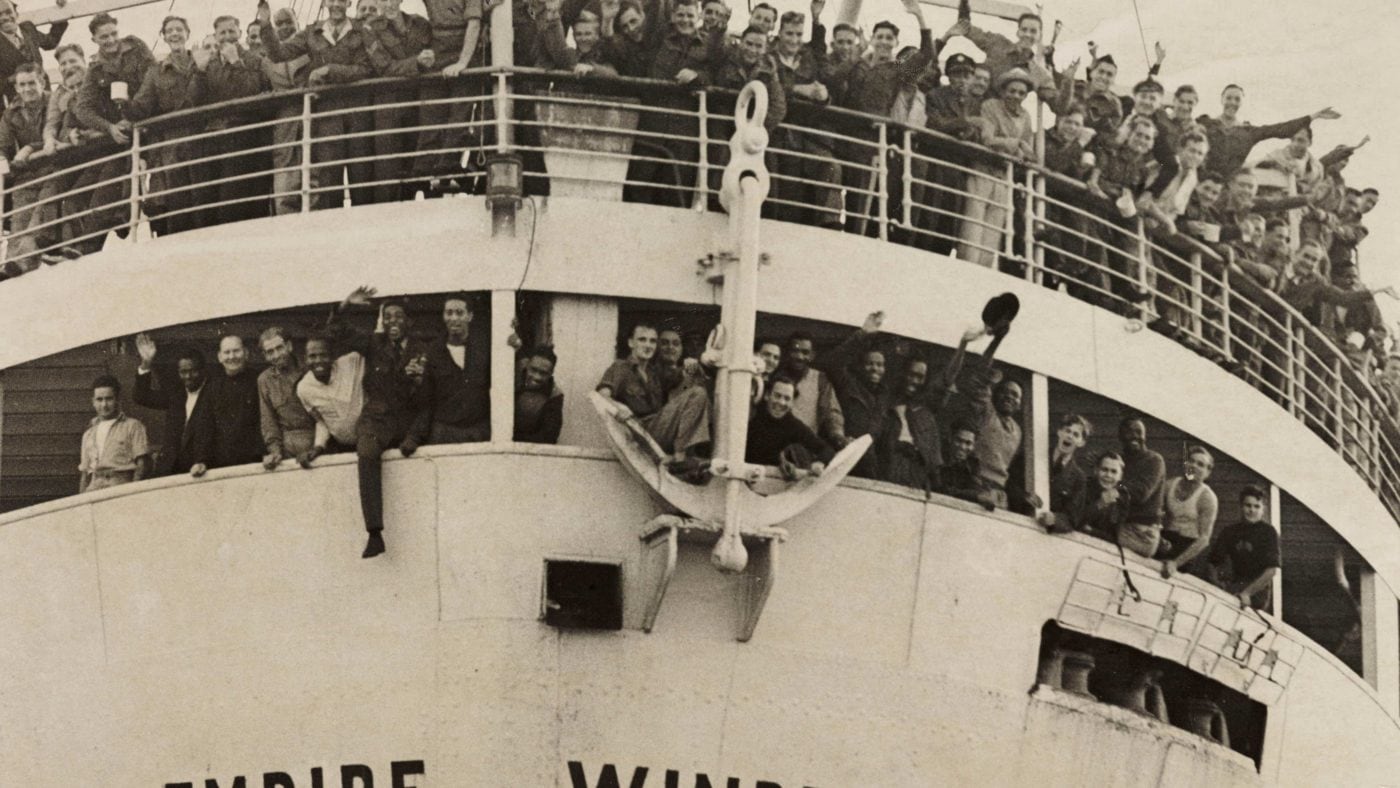A man, woman and child, hand in hand, climb on a mountain of suitcases, wondering what Britain has in store for them. This is the emotion of arrival, captured by the National Windrush Memorial, unveiled today at Waterloo Station.
‘The family is the main focus as they aspire and climb,’ Jamaican sculptor Basil Watson has said of his 12-foot bronze creation. ‘The suitcases represent their culture – holding in them all things valuable, everything that they have in their possession coming from their place of origin.’
The monument pays tribute to the story of ambition and bravery, courage and resilience of those who came to Britain on the Windrush and beyond, and to the contribution that this generation and their descendants have made to every sphere of British culture and society.
The national monument marks a new phase in the Windrush story: the era of increasing recognition.
The timing of this new national memorial is also part of the Government’s response to the Windrush scandal. That was the occasion of Theresa May’s government granting official recognition to National Windrush Day from 2018 – though a broad coalition of civic groups had been marking the anniversary as Windrush Day annually for several years before that.
The official recognition of Windrush Day formed one symbolic part of the government’s apology to those members of the Windrush generation whose lives were blighted by the state’s failure to document or recognise the equal rights and status in Britain of those who had arrived between 1948 and 1973.
Yet it should not have taken the Windrush scandal for this foundational moment in British history to be recognised. The compensation scheme has struggled to secure the confidence of those directly affected, so there is a broad desire in civic society to right those ongoing injustices, while ensuring that the story of four generations of contribution and change in British society are not now told through the narrow lens of the Windrush scandal.
The status of Windrush Day has been rising over the last few decades. The 50th anniversary brought the story of Windrush to widespread public attention. The major BBC television series, and accompanying book by Mike and Trevor Phillips, cast the ship’s journey from Jamaica to Tilbury as the origin story in ‘the irresistible rise of multiracial Britain’ – a story across three generations of both pride and prejudice, resilience and contribution. It is interesting to note that the BBC publicity material for the series refers to this as an ‘unknown story’ as it probably was for the general public, if not specialist researchers.
More recently, the role of the Windrush in Andrea Levy’s classic modern novel Small Island and Danny Boyle’s inclusion of a papier maché version of the ship in the 2012 Olympic opening ceremony have entrenched its status among the landmark moments in our island story.
So this new national memorial should not be the end of the story of recognition, rather the foundation for a new phase of understanding the role of the Windrush in shaping Britain today. The memorial’s unveiling today marks 74 years to the day since the Windrush docked in Tilbury and there is a growing appetite to see the 75th anniversary become a major national focal point.
The Windrush 75 Network aims to encourage participation in Windrush Day as a national moment, broadening public recognition of the contribution of the original Windrush Pioneers, as well as increasing public understanding of the history of race and migration to Britain across the decades. The network’s new research, published today by British Future, finds that much of the public want to better understand the history and legacy of Windrush. Two thirds of respondents said this story should be central to history teaching in schools – and only 9% disagreed.
The 75th anniversary is the opportunity to deepen the public conversation about the past, present and future of the Britain that we have become. It is a chance to work out how we teach the making of modern Britain in classrooms, to commemorate the history on stamps and coins, and to shift the argument from whether statues should come down to which new ones we should be putting up.
It is an opportunity for every sphere of British society – from public life to sport and music, health and transport – to reflect on how we have changed and where we want to go. The story of Windrush is also the developing, unfinished story of modern Britain, three quarters of a century on – and a chance to imagine what we want to see change by the time we mark its centenary 25 years from now.
Click here to subscribe to our daily briefing – the best pieces from CapX and across the web.
CapX depends on the generosity of its readers. If you value what we do, please consider making a donation.


